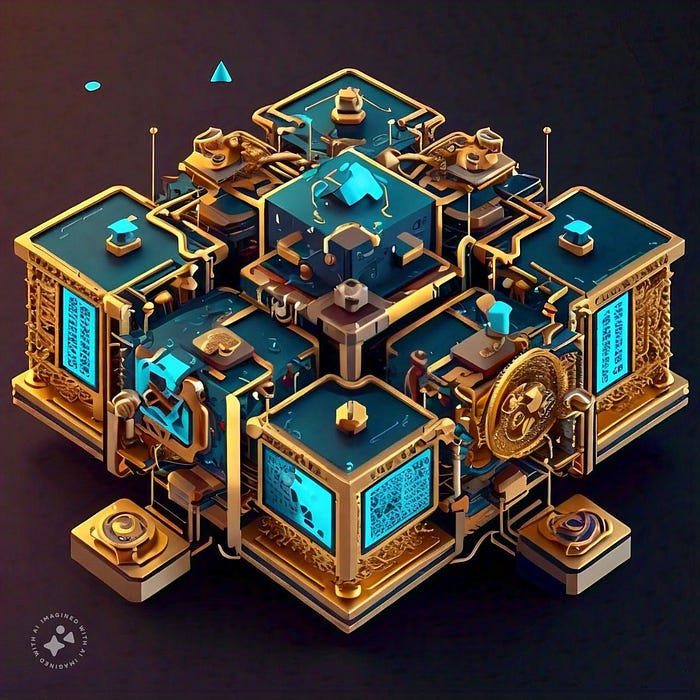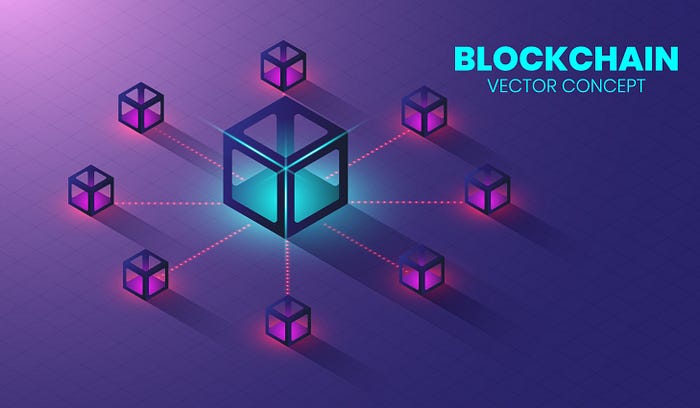The Ultimate Guide to Blockchain Development: Unlocking the Future of Technology

Blockchain technology, often associated with cryptocurrencies like Bitcoin and Ethereum, has evolved into a transformative force with applications extending far beyond digital currencies. From enhancing security and transparency to enabling decentralized applications (dApps) and smart contracts, blockchain development is shaping the future of technology across various industries. As we move into 2024, understanding blockchain development’s principles, tools, and best practices is crucial for developers, businesses, and enthusiasts alike. This comprehensive guide delves into blockchain development, offering insights into its core components, emerging trends, and practical strategies to harness its potential.
Understanding Blockchain Technology
1. The Basics of Blockchain
At its core, a blockchain is a decentralized ledger that records transactions across a distributed network of computers. This ledger is maintained through a consensus mechanism, ensuring that all participants agree on the validity of transactions. Key characteristics of blockchain technology include:
- Decentralization: Unlike traditional databases, which are managed by a central authority, blockchains are decentralized and distributed across multiple nodes. This eliminates single points of failure and enhances security.
Grow your brand’s presence on platforms like Instagram, Facebook, Twitter, and LinkedIn with targeted ads and engaging content.
- Immutability: Once a block is added to the blockchain, it is nearly impossible to alter or delete. This immutability ensures the integrity of the data and prevents tampering.
2. How Blockchain Works
1. Transaction Creation: A user initiates a transaction, which is broadcast to the network.
2. Block Formation: Transactions are grouped into a block by a node (miner or validator) in the network.
3. Consensus Mechanism: The block is validated through a consensus mechanism, such as Proof of Work (PoW) or Proof of Stake (PoS), to ensure its accuracy and legitimacy.
4. Block Addition: Once validated, the block is added to the existing blockchain, and the transaction is considered confirmed.
5. Transaction Finalization: The updated blockchain is propagated to all nodes, ensuring that the transaction is recorded across the entire network.
Core Components of Blockchain Development
1. Consensus Mechanisms
Consensus mechanisms are protocols that ensure all nodes in the network agree on the validity of transactions. Common consensus mechanisms include:
- Proof of Stake (PoS): Validators are chosen based on the amount of cryptocurrency they hold and are willing to “stake” as collateral. Ethereum 2.0 is transitioning to PoS to improve scalability and energy efficiency.
- Proof of Stake (PoS): Validators are chosen based on the amount of cryptocurrency they hold and are willing to “stake” as collateral. Ethereum 2.0 is transitioning to PoS to improve scalability and energy efficiency.
- Delegated Proof of Stake (DPoS): Stakeholders elect delegates to validate transactions and create new blocks. DPoS aims to enhance scalability and reduce centralization.
2. Smart Contracts
Smart contracts are self-executing contracts with the terms of the agreement directly written into code. They automatically execute, control, or document legal events according to the contract’s terms. Key features include:
- Automation: Smart contracts automate processes, reducing the need for intermediaries and minimizing errors.
- Trust and Security: Once deployed on the blockchain, smart contracts are immutable and tamper-proof, ensuring that all parties adhere to the agreed terms.
- Use Cases: Smart contracts can be used in various applications, including financial transactions, supply chain management, and digital identity verification.
3. Decentralized Applications (dApps)
Decentralized applications (dApps) run on a blockchain network and leverage smart contracts to function. Unlike traditional applications, dApps operate without a central authority, offering benefits such as:
-Transparency: dApps operate on public blockchains, providing transparency in how data is managed and transactions are executed.
- Security: The decentralized nature of dApps enhances security by reducing single points of failure and ensuring that data is distributed across the network.
- Examples: Popular dApps include decentralized finance (DeFi) platforms, non-fungible token (NFT) marketplaces, and blockchain-based gaming platforms.
4. Tokenization
Tokenization involves creating digital tokens on a blockchain to represent assets or utilities. Tokens can be categorized into:
- Cryptocurrencies: Digital currencies like Bitcoin and Ethereum that serve as a medium of exchange.
- Utility Tokens: Tokens that provide access to a specific product or service within a blockchain ecosystem. Examples include Binance Coin (BNB) and Chainlink (LINK).
- Security Tokens:Tokens representing ownership of traditional assets, such as stocks or real estate, and subject to regulatory oversight.
Emerging Trends in Blockchain Development
1. Interoperability
Interoperability refers to the ability of different blockchain networks to communicate and interact with one another. As the blockchain ecosystem grows, interoperability becomes crucial for:
- Cross-Chain Transactions: Facilitating seamless transactions and data exchanges between different blockchains.
- Unified Ecosystems: Creating integrated platforms that combine features from multiple blockchain networks.
- Projects: Solutions like Polkadot, Cosmos, and Chainlink are working on enhancing interoperability.
2. Scalability Solutions
Scalability remains a challenge for blockchain networks, particularly those with high transaction volumes. Solutions to address scalability include:
- Layer 2 Solutions: Technologies built on top of existing blockchains to improve transaction throughput and reduce congestion. Examples include the Lightning Network for Bitcoin and Optimistic Rollups for Ethereum.
- Sharding: A technique that involves dividing the blockchain into smaller, more manageable pieces (shards) to increase transaction processing capacity.
- Blockchain Upgrades: Protocol upgrades, such as Ethereum 2.0, aim to enhance scalability through changes to consensus mechanisms and network architecture.
3. Privacy Enhancements
Privacy is a growing concern in blockchain development, with solutions focusing on:
- Zero-Knowledge Proofs: Cryptographic techniques that enable transaction verification without revealing sensitive information. zk-SNARKs and zk-STARKs are examples of zero-knowledge proofs.
- Privacy Coins: Cryptocurrencies designed to enhance transaction privacy, such as Monero (XMR) and Zcash (ZEC).
4. Enterprise Adoption
Enterprise adoption of blockchain technology is expanding, with businesses exploring its potential for:
- Supply Chain Management: Enhancing transparency and traceability in supply chains.
- Financial Services: Streamlining cross-border payments, trade finance, and digital asset management.
- Healthcare: Securing patient data, improving interoperability, and tracking pharmaceuticals.
Tools and Platforms for Blockchain Development
1. Development Frameworks
- Ethereum: A popular blockchain platform for building decentralized applications (dApps) and smart contracts using the Solidity programming language.
- Hyperledger Fabric: An open-source blockchain framework designed for enterprise use cases, offering modular architecture and privacy features.
- Tron: A blockchain platform focused on high-performance dApps and smart contracts, with its native cryptocurrency, TRX.
2. Integrated Development Environments (IDEs)
- Remix: An open-source IDE for developing, deploying, and testing Ethereum smart contracts written in Solidity.
-Truffle Suite: A development environment and asset pipeline for Ethereum, providing tools for smart contract deployment, testing, and management.
- Hardhat: A modern development environment for Ethereum that offers features like local blockchain networks, debugging, and automated testing.
3. Blockchain Explorers
- Etherscan: A popular blockchain explorer for Ethereum that allows users to view transaction history, contract details, and network statistics.
- Blockchain.com Explorer: A versatile explorer for Bitcoin, Ethereum, and Bitcoin Cash, providing transaction and wallet information.
- Polkascan: A blockchain explorer for Polkadot, offering insights into transactions, blocks, and network activities.
Best Practices for Blockchain Development
1. Focus on Security
Security is paramount in blockchain development. Implement best practices such as:
- Code Audits: Regularly audit smart contracts and blockchain code to identify and address vulnerabilities.
- Testing: Conduct thorough testing of smart contracts and dApps, including unit testing, integration testing, and stress testing.
- Best Practices: Follow security best practices, such as using established libraries, avoiding known vulnerabilities, and implementing secure coding techniques.
2. Ensure Scalability
Plan for scalability from the outset by:
- Choosing the Right Platform: Select a blockchain platform that aligns with your scalability needs and transaction volume.
- Implementing Layer 2 Solutions: Consider integrating layer 2 solutions to enhance scalability and reduce congestion.
- Optimizing Code: Write efficient and optimized code to minimize resource consumption and improve performance.
3. Embrace Interoperability
Design your blockchain solutions with interoperability in mind by:
- Leveraging Cross-Chain Protocols: Use cross-chain protocols and tools to facilitate communication between different blockchains.
- Adopting Standardized Interfaces: Follow industry standards and protocols to ensure compatibility with other blockchain networks.
- Participating in Ecosystems: Engage with blockchain ecosystems and communities to stay informed about interoperability advancements.
4. Prioritize User Experience
Deliver a seamless user experience by:
- Designing Intuitive Interfaces: Create user-friendly interfaces for interacting with dApps and smart contracts.
- Ensuring Accessibility: Make your blockchain applications accessible across different devices and platforms.
- Providing Support: Offer comprehensive support and documentation to help users navigate and utilize your blockchain solutions.
Conclusion
Blockchain technology is transforming industries and redefining the way we interact with digital systems. By understanding its core components, staying informed about emerging trends, and following best practices, developers and businesses can harness the power of blockchain
Blockchain

Step into the future with *Avanteia’s Blockchain* course! Learn how to develop decentralized applications, create smart contracts, and explore the vast potential of blockchain technology. Gain practical skills through real-world projects and get certified to stand out in this rapidly growing field.
Contact Us
Phone: +919307402403
Email: info@avanteia.com
Branch Locations: Mapusa, Margao, Pernem, Goa





